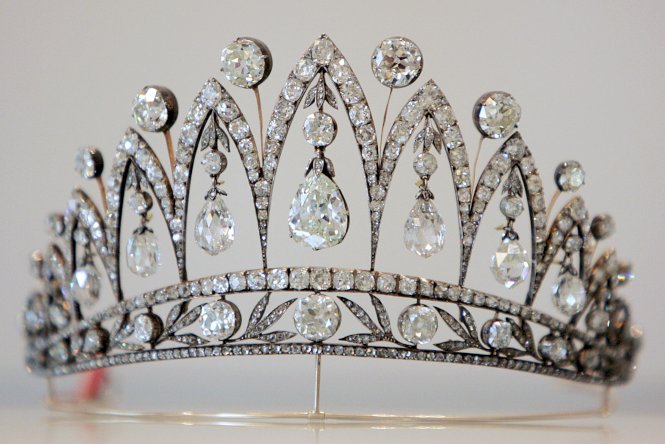Fabergé & Diamonds
John Andrew, who became one of the founding members of The Fabergé Heritage Council in 2007, takes the opportunity to share some stories on Peter Carl Fabergé’s use of diamonds.
“A diamond’s crystal structure gives it brightness, lustrousness, and hardness unmatched by any other natural mineral. Its durability makes it very difficult to damage, and it can survive hundreds of years serving as adornment in ever-changing jewellery styles. Diamond deposits were formed from 177 to 402km (110-250 miles) down in the Earth’s crust over a billion years ago. They were brought to the surface in magma (a mixture of molten and semi-molten rock) through naturally occurring kimberlite pipes in eruptions that sometimes rose faster than the speed of sound! The rock containing the diamonds has to be open pit mined. Alternatively, if the diamonds are removed from the kimberlite pipes by natural erosion (usually over millions of years) they can be found in riverbeds and the ocean floor, or soil where there was once a river.
It is believed that diamonds were discovered in India around 2500 years ago and were prized as divine objects by the country’s rulers. At this stage, cutting and polishing had yet to be mastered, so diamonds retained their natural outer skin. Diamonds were not worn as jewellery until the 11th century, but cutting and polishing did not begin until the 14th century. Cutting was by hand until the early 20th century when machinery was introduced. It is not fair to compare the hand-cut diamonds of the past with those produced by today’s technology. Today’s diamonds are mathematically designed to maximise their brilliance. Diamonds have been admired objects of desire by men and women for centuries. They have also been regarded as the ultimate gift and symbol of love.
In 1882 Peter Carl Fabergé took over his father’s jewellery business founded 40 years earlier in a basement in St Petersburg, then the capital of Russia. Together with his brother Agathon, he quickly transformed it into an international phenomenon with a clientele that embraced the world’s royalty. Clients also included Europe’s aristocracy as well as wealthy socialites, businessmen and industrialists from both sides of the Atlantic. While most Americans shopped at Fabergé in London, Henry C Walters of Baltimore sailed in his yacht to St Petersburg, moored on the Neva and visited the Fabergé flagship store.
The success of the young Fabergé duo was that they changed the nature of their father’s business. Out went the then fashionable French 18th century style where diamonds prevailed. In came the artist-jeweller with the process being design-led, colour being introduced both by coloured gems and reviving the lost art of enamelling. However, this did not mean they ignored diamonds. Illustrated here is a tiara made by Fabergé’s workmaster August Holmström in circa 1890.
It is known as the Empress Josephine Tiara on account of the fact that its briolette-cut (i.e. drop-shaped) diamonds were a gift from Emperor Alexander I of Russia to the Empress Josephine, whom the Emperor visited at La Malmaison following her divorce from Napoleon. When Napoleon and Josephine had married, her son Eugene de Beauharmais was adopted by Napoleon. When Eugene married Princess Augusta of Bavaria he was given the title Duke of Leuchtenberg. Their son Prince Maximilian Joseph married Grand Duchess Maria Nikolaevna of Russia, the eldest daughter of Emperor Nicholas I in 1839. When he inherited his father’s title, his grandmother’s diamonds passed to him.
A later owner had them incorporated into this tiara. This is how Empress Josephine’s diamonds given to her by an Emperor of Russia ended up in a tiara made by Fabergé. The tiara was auctioned after World War I by the Dukes of Leuchtenberg and was bought by the King Albert I of Belgium. In turn, it was inherited by his second son, Prince Charles Theodore (1903-83), and later by his sister, Queen Maria José (1906-2001), the last Queen of Italy. It was sold by Christie’s in London on June 12th 2007, and is now in the McFerrin Collection displayed at the Houston Museum of Natural Science in Texas, USA.”
John Andrew, Fabergé Heritage Council

